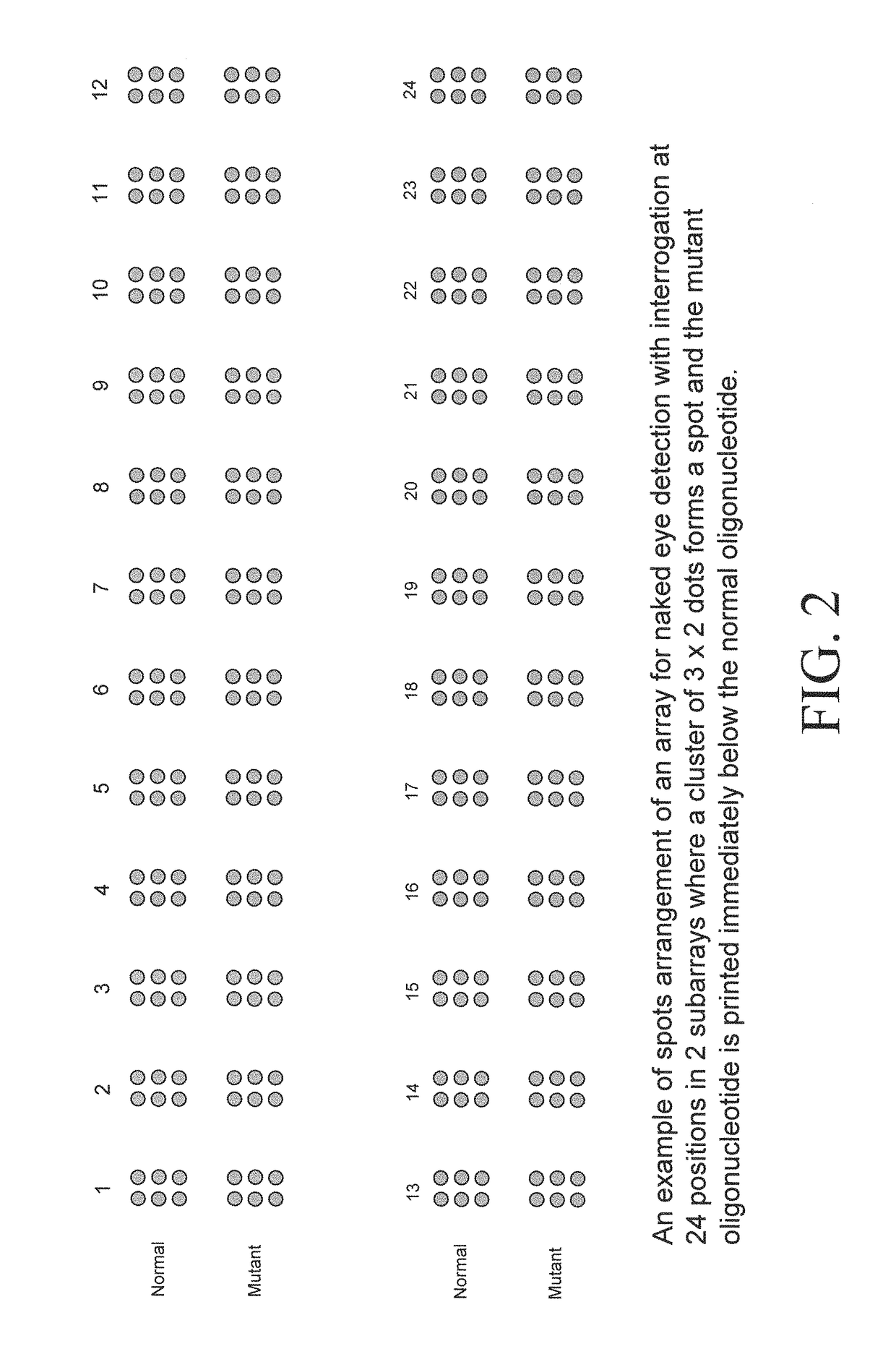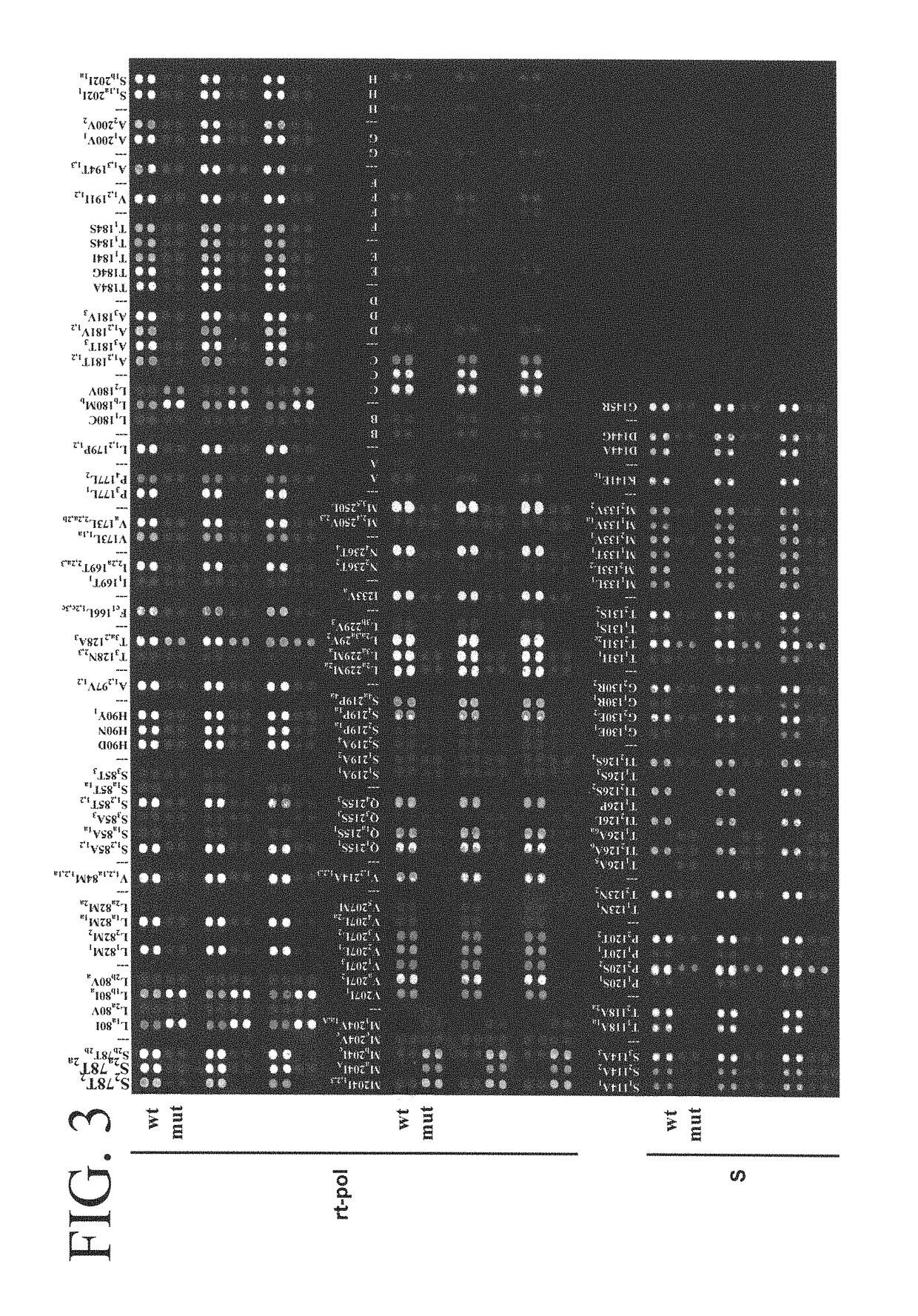Hepatitis B variants with reduced sensitivity to therapeutic compounds, their detection and uses thereof
a technology of hepatitis b and variants, applied in the field of hepatitis b variants with reduced sensitivity to therapeutic compounds, their detection and use, can solve the problems of liver failure, debilitating disease conditions, hbv infection is a serious global health problem affecting approximately 2 billion people worldwide, and achieves the effect of reducing sensitivity to lmv and reducing reactivity to antibodies
- Summary
- Abstract
- Description
- Claims
- Application Information
AI Technical Summary
Benefits of technology
Problems solved by technology
Method used
Image
Examples
example 1
quencing of Viral Nucleic Acids
[0072]Generally, HBV nucleic acids from a biological sample need to be extracted and purified, then amplified, sequenced and then the generated sequence examined for the presence of the markers.
[0073]HBV DNA extraction can be accomplished by, for example, proteinase K digestion followed by phenol, phenol / chloroform extraction and ethanol precipitation. Alternatively, any commercial kit utilizing, for example, the silica-gel-membrane technology can be used.
[0074]Amplification can be performed by, for example, polymerase chain reaction (PCR; Saiki et al., 1988).
[0075]Sequencing can be achieved by the dideoxynucleotide chain termination method also known as the Sanger reaction or by a modified version of the Sanger reaction, the cycle sequencing reaction with fluorescent dideoxynucleotides. Although direct sequencing can detect all mutations, new and known ones, its sensitivity is a drawback. A minor population of resistant mutants needs to reach 20% of t...
example 2
Via Oligonucleotide Probes
[0076]Detection of variants or mutants by oligonucleotides methods is much more sensitive than direct sequencing. Minor populations of variants as low as 5% of the total HBV population can be identified, as in the early emergence of mutants, before manifestation of clinical resistance.
[0077]By using a panel of oligonucleotides to simultaneously detect a number of mutations or sequence variations, with the enhanced sensitivity, the method allows prediction of resistance to other classes of nucleoside / nucleotide analogues.
1. Reverse Dot Blot Hybridization
[0078]Oligonucleotide probes, designed to detect the viral markers for long-term response to anti-HBV therapy, for immune escape, and for genotyping, can be arrayed on membranes or preferably glass slides then hybridized to amplified and labeled HBV nucleic acids. Following hybridization, the membrane or slide is washed at high stringency. The result of the hybridization reaction is then visualized.
[0079]Pref...
PUM
| Property | Measurement | Unit |
|---|---|---|
| thermostable | aaaaa | aaaaa |
| resistance | aaaaa | aaaaa |
| immune pressure | aaaaa | aaaaa |
Abstract
Description
Claims
Application Information
 Login to View More
Login to View More - R&D
- Intellectual Property
- Life Sciences
- Materials
- Tech Scout
- Unparalleled Data Quality
- Higher Quality Content
- 60% Fewer Hallucinations
Browse by: Latest US Patents, China's latest patents, Technical Efficacy Thesaurus, Application Domain, Technology Topic, Popular Technical Reports.
© 2025 PatSnap. All rights reserved.Legal|Privacy policy|Modern Slavery Act Transparency Statement|Sitemap|About US| Contact US: help@patsnap.com



